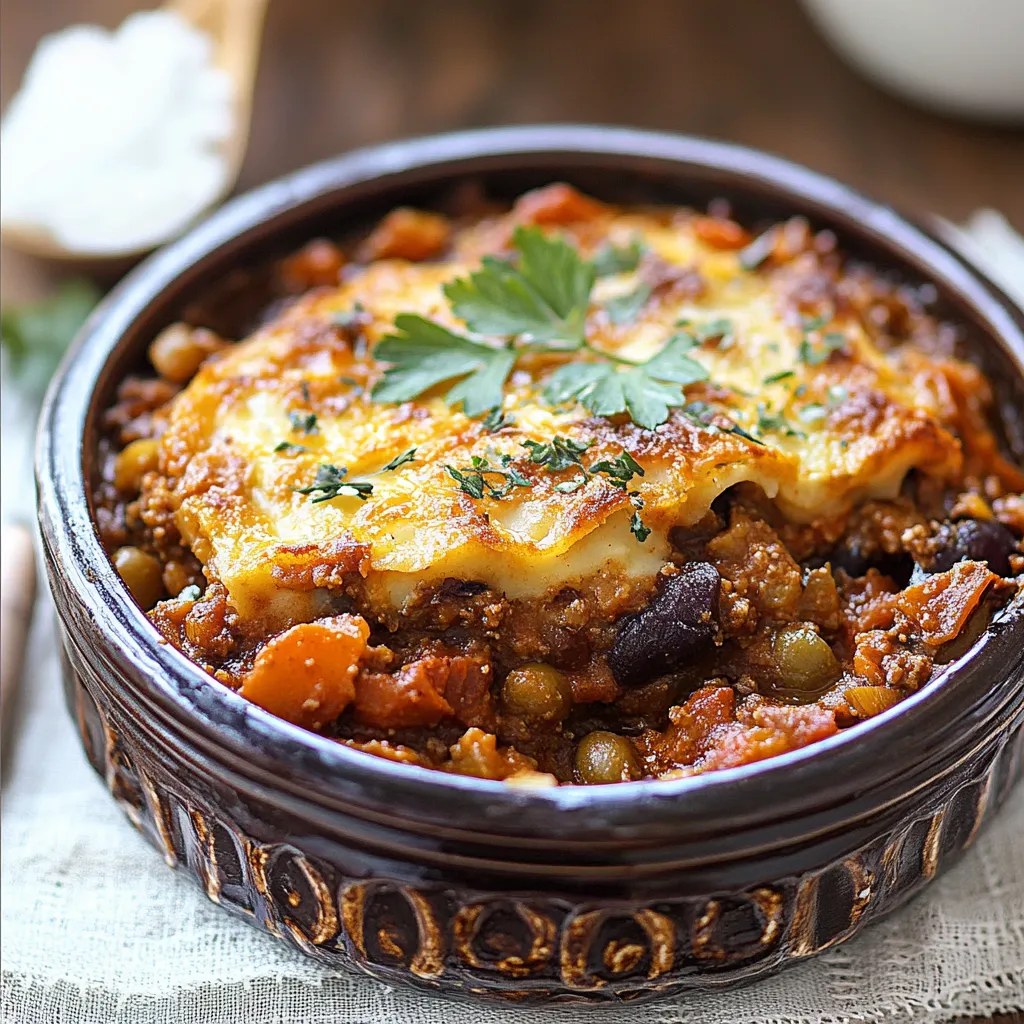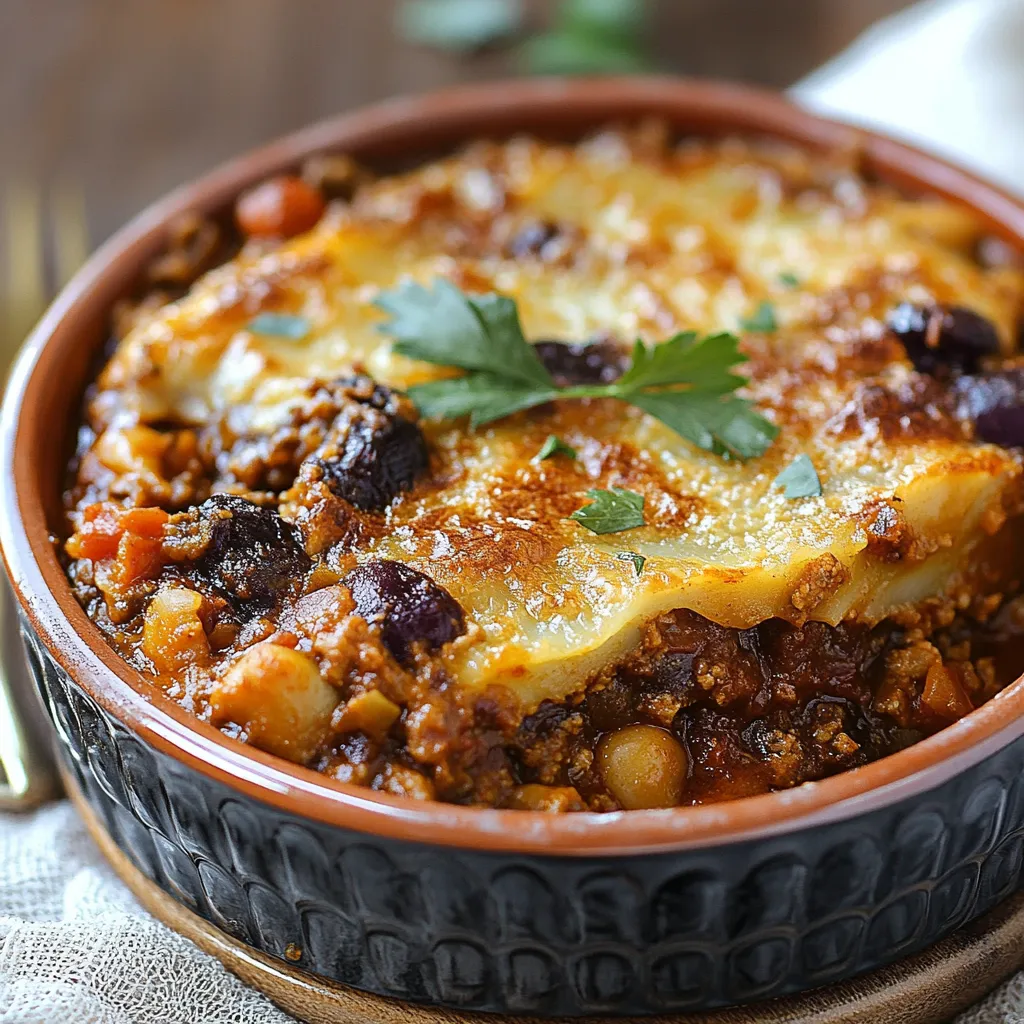 Save
Save
Maghmour is a classic Lebanese eggplant stew that brings smoky richness and deep savory notes. My family’s gatherings wouldn’t be the same without it. This plant-forward dish stews together flavors that get better the longer it bubbles away on the stove.
My old Lebanese neighbor was the one who handed down the magic trick: take your time roasting those eggplants. Even now, just the smell of spices wafting from the kitchen guarantees my family’s coming running for dinner.
Hearty Ingredients
- Olive oil: Go for the best option you can get since its taste really comes through here
- Dried mint: Gives Maghmour its trademark pop that makes it stand out
- Cinnamon: This cozy spice brings in a gentle sweetness
- Chickpeas: They’re what make this so filling and satisfying
- Tomato paste: Thickens everything up and makes the sauce seriously rich
- Fresh tomatoes: Find some that are juicy and a little soft when you press them
- Garlic cloves: Don’t go for the pre-chopped stuff—use fresh for proper punch
- Yellow onion: Sautéed onion lays down that naturally sweet flavor
- Eggplants: Choose ones that look shiny and have few marks—they won’t go mushy
- Salt and pepper: Season as you like it
Simple Step-by-Step
- Create the Sauce:
- Toss in your chopped tomatoes, put a lid on, lower the heat, and simmer for at least 10 minutes. Stir now and then and splash in a little water if things get dry. You’re looking for a chunky, thick sauce—not a runny puree.
- Build Up Flavor:
- As soon as the onions turn soft, stir in the minced garlic. Fry for just a minute or so—don’t let it burn. Quickly mix in the cinnamon and tomato paste, making sure everything gets a bit toasty (this makes the flavors pop).
- Start the Base:
- Meanwhile, chop onions and smash up garlic. Dice up those tomatoes. Heat up some olive oil in a pot on medium and add onions. Sauté for 5 minutes until they look glossy and just start to get golden.
- Get Eggplant Ready:
- Flip the oven on to 400°F (200°C). Partly peel eggplants so they keep some skin—this stops ‘em getting too soft. Chop into hearty inch-sized chunks, set on a tray, and coat every piece with olive oil so nothing dries out (that’s where you get that tasty smoky edge).
- Roast Eggplant:
- Spread your eggplant pieces out—they shouldn’t overlap. Roast for around 20 to 25 minutes. You want them caramelized and totally soft inside, with golden bits on the edges. This builds the stew’s hearty backbone.

My grandma always swore that a good Maghmour lets you taste each part of the dish all at once, yet nothing outshines the rest. She’d finish with a squeeze of lemon—best move ever to cut the richness and make it all pop.
The Real Eggplant Trick
What really sets Maghmour apart is how you treat your eggplant. Lots of folks fry it, but that can get greasy fast. Roasting keeps it rich and smoky, but lighter. Want more charred flavor? Quickly roast one eggplant over a flame before peeling and adding it in. Takes only a few minutes and the smoky hit is out of this world.
Switch It Up Your Way
Classic Maghmour keeps things traditional, but it’s fun to change it up. Want some heat? Sprinkle in Aleppo pepper or cayenne. If you’re out of fresh tomatoes, just use a 14-ounce can of good diced ones. In northern Lebanon, cooks sometimes top bowls with toasted pine nuts for crunch and a nutty layer. During summer, toss in chopped zucchini during the last 10 minutes—it makes everything fresher.
How Maghmour Is Served
Lebanese folks usually eat Maghmour just warm or even at room temp—never piping hot. This way the flavors are at their best. Tear up warm pita to scoop it up, or dish it out next to plain rice which grabs that tasty sauce. Some cool cucumber yogurt salad on the side is a must, balancing out the richness. For an epic mezze table, you can also add hummus, olives, and tabbouleh—instant party.

This is one of those seriously tasty dishes that makes you believe in simple food. It’s always a winner at gatherings—and I always go back for seconds!
Common Recipe Questions
- → How's Maghmour not the same as Greek moussaka?
Maghmour ditches the meat and béchamel for eggplant and chickpeas swimming in a tomato sauce with cinnamon and mint. Greek moussaka's got layers of eggplant with lamb and a creamy top. Lebanese Maghmour is lighter, vegan, and gets all its flavor from herbs and spices, not cheese or meat.
- → Can I make Maghmour ahead of time?
Sure thing! Maghmour tastes even better if you cook it the day before. Cool it down, then stash it in the fridge with a lid on. Let those flavors blend overnight. To serve, just warm it up gently and add a splash of water if it's thickened too much.
- → What's good alongside Maghmour?
Grab some warm pita or flatbread to scoop it up. It also works great with vermicelli rice, or a simple mix of chopped tomato and cucumber. If you're putting on a spread, set out some hummus, tabbouleh, baba ganoush, and a few pickles.
- → Can I swap canned tomatoes for fresh ones?
Absolutely, toss in a 14oz can of diced tomatoes instead of chopping fresh. Since canned can be a bit wetter, just go easy on extra water unless you see it needs some as it cooks.
- → Do I have to peel the eggplant?
You can leave the skin, peel it off, or do stripes—whatever you like. Doing it in strips helps keep eggplant from turning to mush, but if you don't mind a softer stew or want more texture, adjust as you please.
- → Can Maghmour cook in a slow cooker?
Yep, it works in a slow cooker. Still give the eggplant a roast first, then toss everything into your slow cooker. Cook on low for about 4-5 hours or crank it on high for 2-3. You barely have to check on it, and the flavors just get better.
